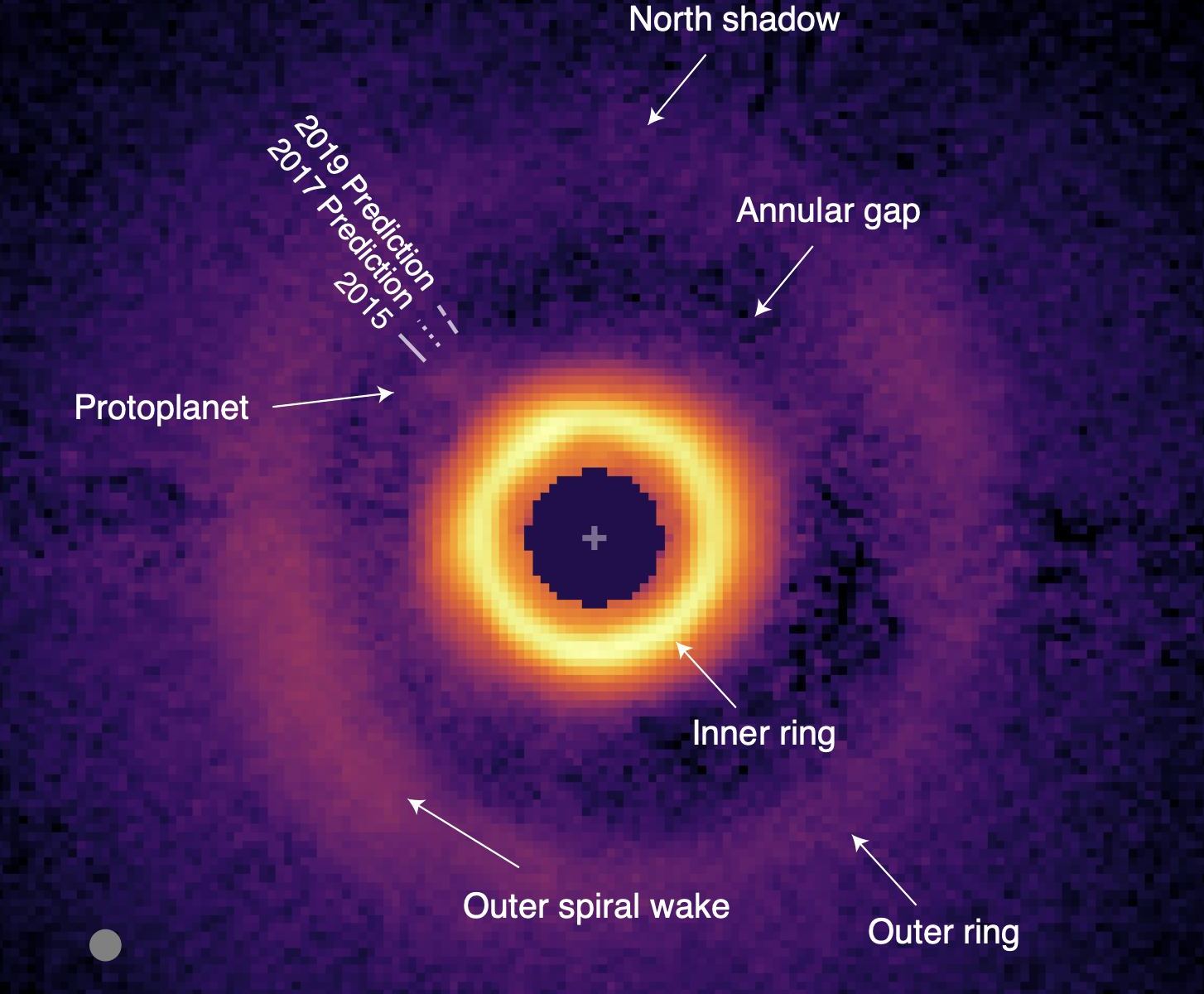Astronomers have detected a small, compact source embedded in a gap in the disk surrounding a young star. They believe it is a baby planet in the process of growing.
Protoplanetary systems offer rare glimpses into the evolutionary history of solar systems like our own. We know already from extensive observations and theory that solar systems start out as vast clouds of interstellar gas that then compress and begin to rotate. Eventually that rotating gas flattens into a disk and planets begin forming around a central core.
While we have a very good understanding of the general picture, we do not understand the details of how planets form, especially the differences between inner rocky planets and outer giant worlds. So the more direct observations we can make of protoplanetary systems the better our understanding can be.
Unfortunately the process of planet formation plays out over millions of years, so it’s not like we can just stare at one system and watch it evolve before our very eyes.
Or can we?
A team of astronomers have released a series of observations going back almost a decade of the system called HD169142. This system has a very fortunate alignment, as it appears face on from our field of view, so we get a complete view of the entire system. The system itself is a disk in the process of forming planets.

Previous observations had already identified a ring-like gap in the disk sitting about 37 AU from the central star. Follow-up observations discovered a small object embedded in that gap. The team performed repeated observations over several years and found that the small, compact object was moving.
The team argues that they are watching a baby planet move around a star. They believe it’s a planet because the motion of the bright source fits with the typical Keplerian motion of a planet around a star. Second, the edges of the gap are very bright, which is expected from theoretical simulations where a planet has carved out a gap in the disk from its gravity.
Lastly, the team has observed spiral-shaped structures in the disk emanating away from the gap. This is also expected from theoretical calculations based on the gravitational influence of the planet on the rest of the disk.
They believe that this protoplanet is roughly the mass of Jupiter and is still in the process of forming. It has already accumulated a lot of gas and cleared that gas out from its ring, and more gas is likely funneling onto the planet from the surrounding disk. We do not yet have the observational capabilities to determine if other planets are forming within the disk, but continued studies of this baby system can shed a light on how planets like our own Jupiter form.

